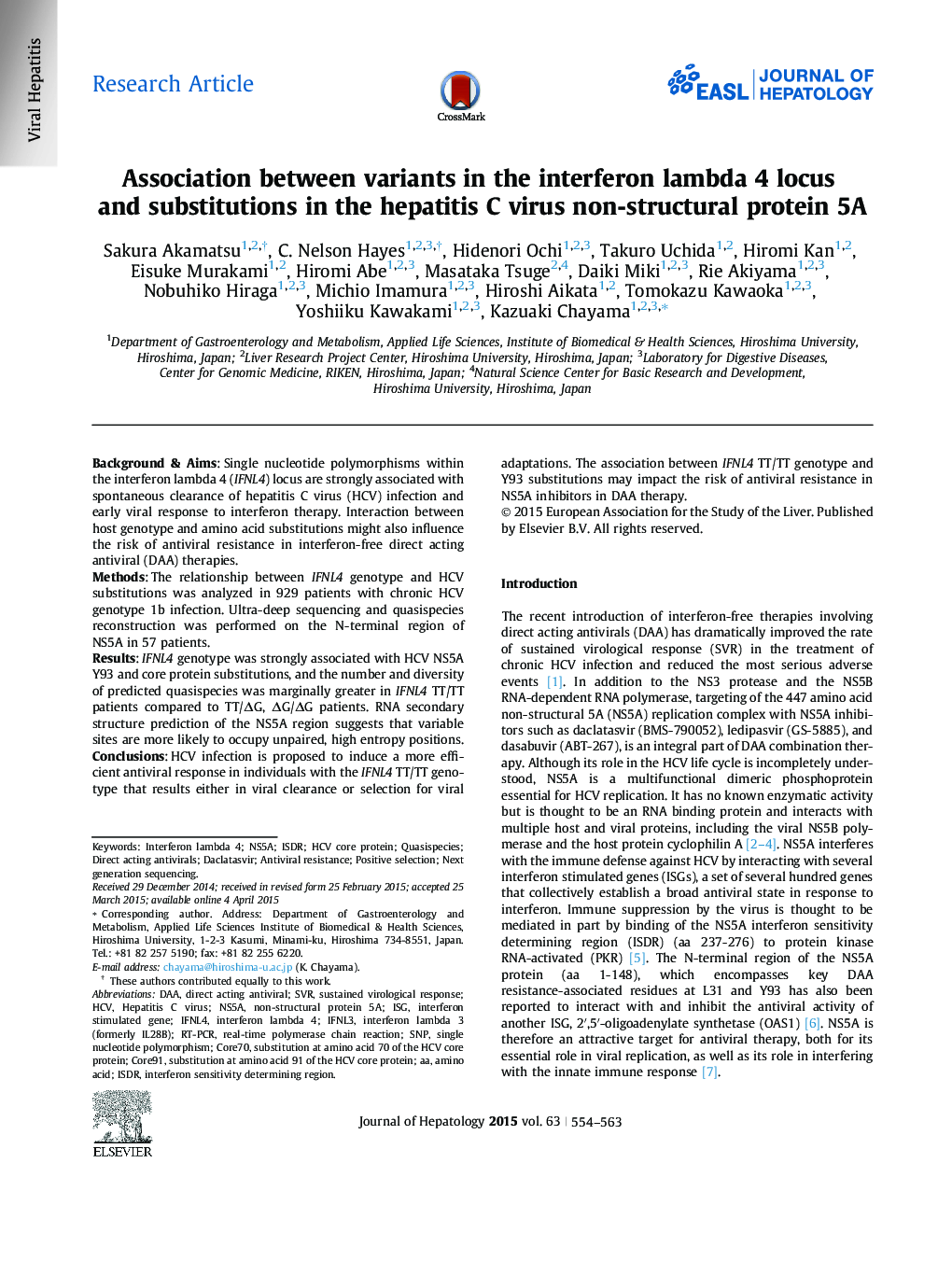| Article ID | Journal | Published Year | Pages | File Type |
|---|---|---|---|---|
| 6101714 | Journal of Hepatology | 2015 | 10 Pages |
Background & AimsSingle nucleotide polymorphisms within the interferon lambda 4 (IFNL4) locus are strongly associated with spontaneous clearance of hepatitis C virus (HCV) infection and early viral response to interferon therapy. Interaction between host genotype and amino acid substitutions might also influence the risk of antiviral resistance in interferon-free direct acting antiviral (DAA) therapies.MethodsThe relationship between IFNL4 genotype and HCV substitutions was analyzed in 929 patients with chronic HCV genotype 1b infection. Ultra-deep sequencing and quasispecies reconstruction was performed on the N-terminal region of NS5A in 57 patients.ResultsIFNL4 genotype was strongly associated with HCV NS5A Y93 and core protein substitutions, and the number and diversity of predicted quasispecies was marginally greater in IFNL4 TT/TT patients compared to TT/ÎG, ÎG/ÎG patients. RNA secondary structure prediction of the NS5A region suggests that variable sites are more likely to occupy unpaired, high entropy positions.ConclusionsHCV infection is proposed to induce a more efficient antiviral response in individuals with the IFNL4 TT/TT genotype that results either in viral clearance or selection for viral adaptations. The association between IFNL4 TT/TT genotype and Y93 substitutions may impact the risk of antiviral resistance in NS5A inhibitors in DAA therapy.
